Abundant Life in the Atlantic
- Springer’s Point Nature Preserve
- Sea Turtle
- Blowing Grass
- Cecropia Moth
- Feathers
- Loon
- Nutria Tracks
- Beach Grass
- Sea Turtle Eggs in Rows
At the wise age of twenty-two I moved to a tiny island, only fifteen miles long, in the wide Atlantic Ocean off North Carolina, part of the Outer Banks. The island population in 1971 was 550 with an average income of $4,400. Although I didn’t consider the future much back then, more than fifty years later I find myself still living part time on Ocracoke Island. How did this happen? One answer is simply the abundance of nature I found on that tiny island. Another must be that I discovered I was not so wise after all, and the island had much to teach me.
In the early years, I awoke to the immensity of nature everywhere. Fourteen miles of the island were a national park, with abundant migrating and mating birds, dolphins, crabs, and more. I remember seeing the face of a wave completely full of moving bluefish. They were not individuals; they were a mass, or is it a mess? of fish! As a young girl my mom had taught me how to clean a fish, so I began fishing in the afternoons after my teaching job and cooked many a fish for dinner. Today I like to roll them in Panko before sautéing them, but in the early 1970s Panko had not yet reached the grocery shelves of our little island town.
I also began to collect and study shells. I learned about their patterns and how serious collectors select a particular family to study, as there are thousands of existing shells. I gradually found various shells after big storms or hurricanes. I learned that shells can mix up or forget their pattern if they have a hard year—if water temperatures change, if predators arrive, or if there is less food available. I found this fact amazing and learned that some shell collectors focus on gathering these “mutants” or unusual shells. Also I began to identify and study birds. I’m still intrigued today with the interesting habits of oystercatchers, skimmers, loons, night herons, and my new favorite shorebird, Ruddy Turnstone, who looks just like he sounds. Some nesting oystercatchers play tricks to preserve their nests, such as making a “scrape”—a fake nest—to see if the selected area is full of predators. If so, the oystercatchers will then make their real nest in a different and safer spot. Aside from their beauty, birds are smart and entertaining to watch.
And oh, the abundance of sea turtles! Usually over a hundred nests are found on this little island each year. Park Service rangers and dedicated volunteers find and mark the nests and then monitor the hatching of dozens of round eggs with leathery shells. Baby turtles eat the protein inside their shells; this gives them the strength to crack out and climb from the buried nest onto the sandy beach. There they begin a long journey swimming through the North Atlantic to reach the Sargasso Sea where they eat and eventually mate. Other species also eat in the Sargasso, where the seaweed is thick and holds many organisms and small fish. Later the female turtles return to the island to lay eggs, continuing their cycle of life. Joy fills me when I watch the little ones slap their flippers against the sand with determination as they head straight to the ocean after hatching. They inspire me with their inborn knowledge of where they belong.
Nature’s wonder is nonstop on this island. I’ve been amazed by winds over 100 miles an hour; watched rain blow from all directions; seen large numbers of ghost crabs running on the beach at night; watched horseshoe crabs mating in soundside waters, perpetuating one of this planet’s oldest creatures; felt mosquitoes swarming and buzzing; seen fish and birds migrating in vast groups down the beach, across the sound, and heading south for winter; and I’ve caught sea robins, which seem to be an evolutionary miracle: a fish with wings! Because nature is so abundant, there is little sense of deprivation living in a place that lacks many things that mainland people take for granted, while offering so many others. I’m seeing things daily that astonish and amaze. For these gifts I am always thankful.
In the 1500s Ocracoke was settled by Indians, probably descendants of Algonquins, who lived here in warm months, fishing and drying some of their catch for the long cold winters. The next settlers guided boats across the dangerous ocean inlet, delivering war or peacetime supplies to the North Carolina coast. Ferocious winds kept the channels emptying and filling, and navigating the shifting shoals was a continuous job. Still is. The next arrivals were pirates, including Blackbeard, and others who lived by “hook or crook,” surviving through times of deception or deprivation. This feast or famine mentality continues in today’s tourist economy. Some summer months show a prosperity never imagined in earlier times, while the cold and isolated winters still require folks to entertain themselves and often be more frugal than they want. This ever-changing lifestyle requires hardy people, and for those who are independent and lean toward self-sufficiency, this is the life for us. Anything else just doesn’t feel quite right. And if you’re lucky enough to be a descendant of earlier inhabitants, you can feel the island in your blood.
Work and play frequently overlap in island life. Culling fish, painting motel rooms, photographing weddings: I’ve enjoyed doing them all. But my longest and most rewarding work was starting and running a bed and breakfast for thirty-three years. I welcomed the opportunity to be self-employed. The B&B helped me to trust my intuition and decision-making abilities, find my clear voice, and deal with the consequences of my decisions. There was no one else to blame. Improvements or changes were mine to make.
To me, abundance is often reflected in variety and, oh, the variety of people who come to this island from all over the world! Sharing space with strangers and finding ways to enjoy each other involved giving up preconceptions I had about the hospitality business, or people, for that matter. I grew to accept people as they appeared, with little need to change them. We were simply passing briefly through each others’ lives. Their lives did not need to make sense to me; only mine did. Over the years, thousands of people ate at my breakfast table. They shared laughter, issues of all sorts, stories, moments of spontaneous singing, playing the piano, reading poems, and looking at art photographs. There might even be dancing in the kitchen before breakfast ended. Some mornings we were stunned by the magical synchronicity of the groups of people who arrived together at this random table. I often felt we were helping to create a new world, one in which we didn’t judge others, but of shared talents, fun, and insights, all while folks discovered how much wonder the island offered them. Yes, there were difficult guests and moments for me, but they never deterred the greater movement toward building a more inclusive and loving world.
But what about an island’s abundant silence?
Always the shoreline beckons for a walk in silence. This in-between liminal space, somewhere between our conscious and subconscious life, is a great place to muse and explore the ocean’s edge. As the years passed I discovered how much I needed silence as a counterpoint to the activity of my business and island life. In winters I traveled to Berkeley, California, and studied various forms of healing work. All of this healing work encouraged a practice of silent meditation, and I discovered that I not only needed it but loved it. I began to seek group meditation in various settings and discovered this amazing way to share space with others, without talking. This practice helped me to choose my words more carefully, when I was talking. And of course I could be silent at the beach, in the maritime forest, breathing, just being. Silence helps me rest inside myself and not be distracted by outside events or what people are saying. I feel myself more centered in my own perceptions and feelings, and this helps me navigate an increasingly busy world, on and off island. Silence helps me feel the power that spaciousness and neutrality give to my personal understandings and helps me allow the same for others. Things do not always work out the ways I may have wanted, but I have a steady practice that allows me to return to peace.
No reflection about island abundance could possibly omit the ocean! Since childhood I have loved the ocean the most of all things about this planet. The ocean teaches me about words and moods. She defines them: fierce, fun, calm, strong, rough, gentle, humbling, free-flowing spirit, life force, and love. She offers respite from our busy little village and offers shoreline bonfires or quiet underwater blueness that soothes beyond words. She is friend, teacher, provider, mother, comrade-in-adventure, lover, and great Mysterious Oneness. Is that all? I am forever in awe of the ocean’s capacity to amaze, reassure, or remind me how little I am in charge. Even in huge displays of power she teaches us who live nearby that we are honored to share her space, but not control it.
In September 2019 we experienced the most powerful hurricane ever to come ashore. Seven feet of water in two hours; we are still recovering. The days and months following hurricane Dorian were some of the very hardest. It was heartbreaking to feel the loss in our town. Is loss the opposite of abundance? One simply does not prepare for the other. Our groundwater table has not been the same, and climate change has taken on immediate meaning. The generosity of nearby islands and communities helped us stabilize and begin to clean up, rebuild, and imagine how to start life again.
Living on a small island is an unusual way of life and is not right for most people. It calls forth a special flexibility and willingness to endure hardships with heart. Things don’t always work on the island, and repairs can involve a journey of time and money and can take days. A sailboat is blown by a storm and hits a dock’s power line, and it will take time to repair the island’s electricity; or sand is pushed into the inlet and ferries can’t run for a few days or longer. Patience is an important virtue in enjoying island life, and a sense of adventure helps too. But throughout it all, nature continues to lift, amaze, and inform life. Recently I’ve seen the largest moth in North America and learned about the red throat fan of the green anole (lizard). Magical mystical nature.
Living with the way things are is one of the greatest island teachings I have received. We simply cannot control nature, and, thank goodness, she’s always showing her power. In one night’s storm she can move more sand than a dredge boat of men using heavy equipment can move in a month! I have learned to take things as they come, without expectation or promise, for there are vast and great forces at work. I feel how this surrendering has made my life richer. I don’t think I’m in charge of very much. I’ve learned not to fight with how things are. I’m simply able to do what I can in any given moment. Moments keep changing and so must I.
A few years ago a friend came to visit and we went to the next island south. We walked miles on the beach. Then we drove more miles, picking up litter. He said, This is so satisfying, and I agreed. It felt good to care for the earth and birds, taking away plastic and discarded ropes that might hurt them. We watched nesting birds and were swallowed in the timeless world of nature. What can feel better than belonging to earth? What can feel better than being alive in a beautiful place? What can feel better than not being more important than anything else?
*All photographs by the author


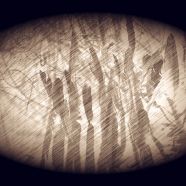





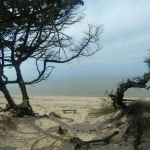
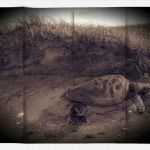
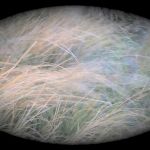
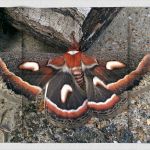
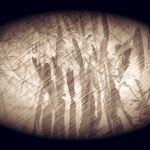
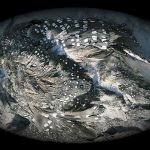
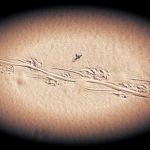
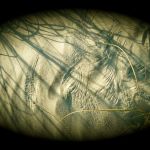
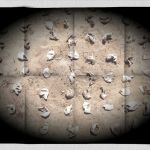
Fine piece, Ann. Thank you for this wisdom and perspective.
How fine to read this while vacationing in Ocracoke, having just returned from Portsmouth Island! Thank you for your exacting eye, and for encouraging us to live with gratitude and humility.
Really enjoyed reading this fine piece!
Lovely indeed. Writing from Ocracoke now — just back from Portsmouth Island. We did see an anole on Springer’s Point yesterday. The time of year is not right for the red throat patch though. Excellent take that only time can give about the island life. Thanks for the article.
Thank you Ann
Beautiful and so moving!
Thank you, Ann. What a mesmerizing description of the ocean. Reminds me why the island’s gifts are so nourishing.
Thank you for sharing the wonderment of your immense beautiful life on Ocracoke Island.
So wonderful and moving. Thanks so much
This is wonderful!
Excellent reminiscing on Ocracoke, a thin yet enduring place which you bring to life for those of us who have only visited a few times or not at all. Thank you for sharing your life with this island paradise!
You’ve captured such beautiful harmony amid harsh conditions and illustrated with your exquisite writing that being with what is takes a deep love and appreciation of all shifting energies! Thank you for your derp dive into the unknown!
This piece captures the island so magically. And the final questions, those are everything. Thank you Ann for this writing and for all of the portals you have opened.
So fine, Ann.